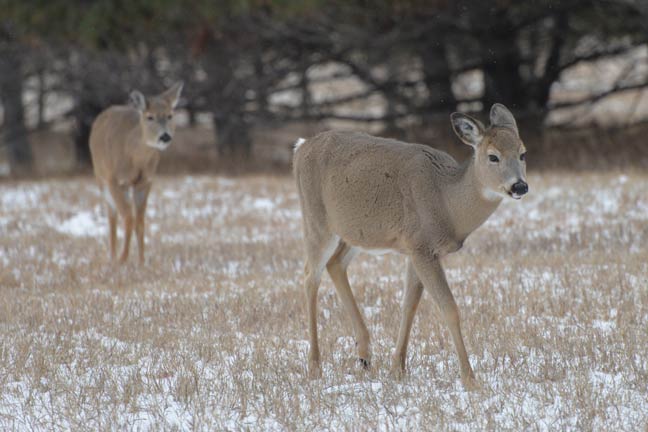This also happens to be muzzleloader season, and while there is the always the chance to knock down a giant, most of us would be well served to tamp down our expectations and set our standards accordingly.
For this particular hunter, smokepole season is a venison quest. Here are three ways to add some healthy protein to your diet while toting a frontstuffer.
Staging City
It would seem that if you're hunting any deer in the herd, setting up on a food source would be the right choice. That's what an awful lot of the whitetail experts will tell you to do. But what if you hunt a place that has been absolutely pounded and the average fawn is savvier than the mature bucks that those hunters protect on premier ground until they are hit-list worthy?
They will, usually, get up from their beds a little early and browse their way slowly toward the food source. This is a bowhunter's strategy adapted to the muzzleloader's world, and it works. The key is to find the thickest, nastiest cover on your property and get as close as you can without making too much noise, or worse, allowing your wind to blow through the cover.
This may seem like an evening-only strategy, but it works in the morning as well provided you've got the right entrance route. Most of the time, you don't need to be more than 100 or 200 yards off of the destination food source to make this work.
The Mini-Drive
In general, I'm not a fan of driving deer. That's probably because I grew up bowhunting only, and never took part in the traditional deer drive. I have, a few times, found good situations in which to move some deer in the right direction of a stander during muzzleloader season.
If you've got a situation where you can make a mini-push, plan it out and go for it. Just make sure to be quiet, and keep it slow and simple. It doesn't take much to get late-season deer to move, and the goal is to get them up and walking - not sprinting for the next county.
Old-School Still Hunting
I love to still hunt. This tactic, which hasn't been popular in a long, long time, is a lot of fun with a muzzleloader. I keep my eyes glued to the weather and if there some fresh snow on the way, or it's going to be super windy, I plan a sneak. Ditto for any rain in the forecast.

The first time I did this, I hunted during a crazy storm and spotted a doe and fawn 50 yards from me. I missed her clean and thought my season was over. Later, I crested a ridge and looked at the valley below me. A doe was bedded 35 yards away, oblivious to my presence. It was the only time I've ever shot a whitetail in its bed.
The key to the second shot versus the first, was that I took a careful rest while lying prone on a rock outcropping. The first I shot off-hand, which is always a bad idea. If you're going to go the sneaky route, carry a pair of shooting sticks or try very hard to remember to take a solid rest. The importance of that can't be overstated.
Conclusion
If you're meat-poor and own a muzzleloader, you've got options. There are plenty of ways to get a tasty doe or young buck in your sights but just remember, it might not happen on a food source like it's supposed to. You just might have to get a little creative in your tactics.
没有评论:
发表评论